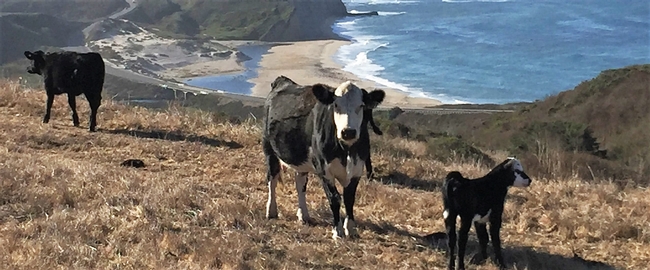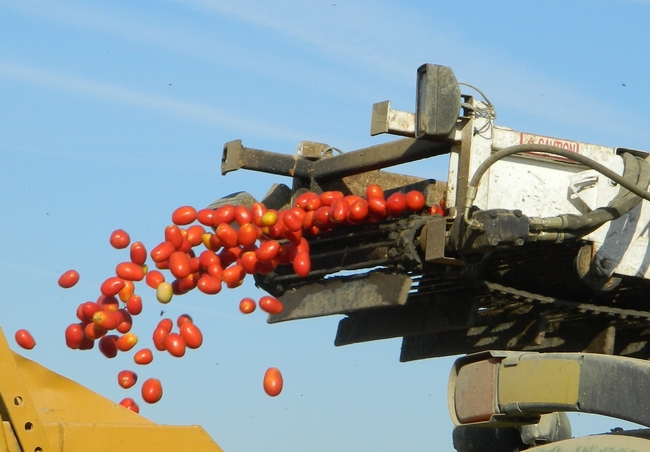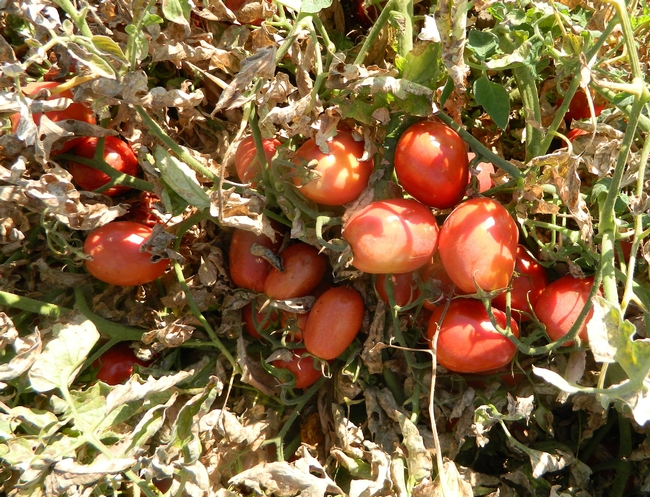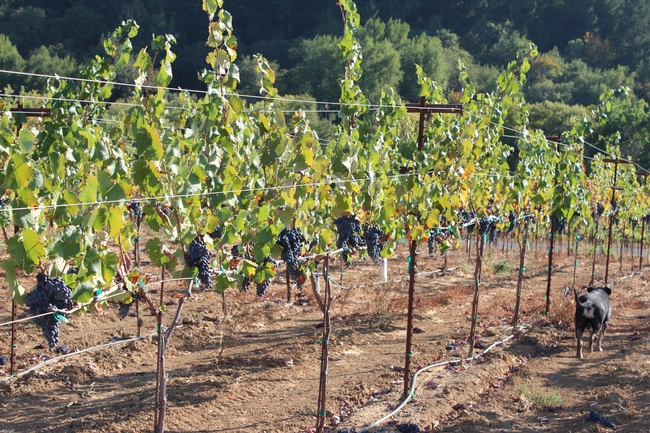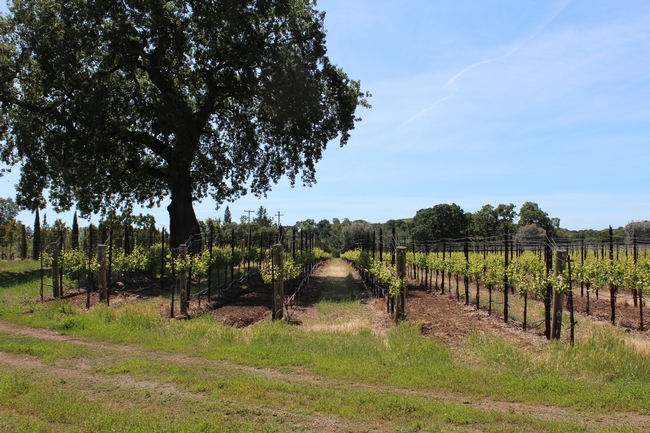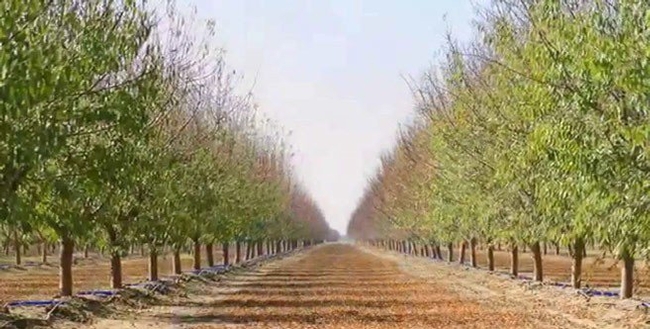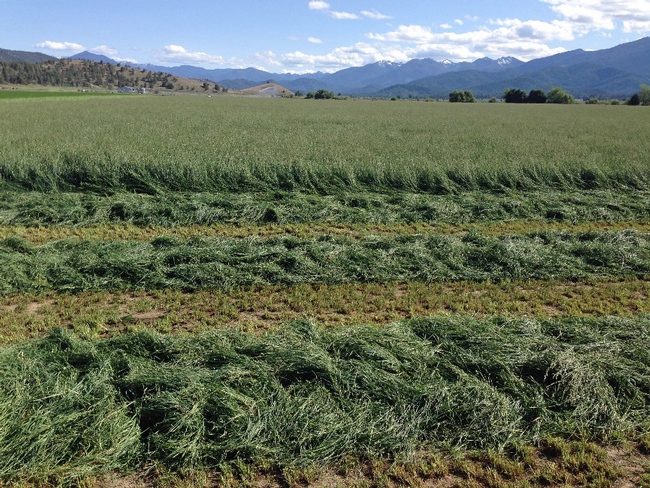Posts Tagged: cost of production
Thinking about going into the cattle business? New UC cost study for beef cattle operation helps ranchers plan
A new study on the costs and returns of a beef cattle operation has been released by the University of California Agriculture and Natural Resources' Agricultural Issues Center. The estimated costs can help ranchers and land management agencies on California's Central Coast make business decisions.
“This cost study can be a valuable tool for someone who is thinking about going into the cattle business because it will help them think through the various categories of costs, and aid in developing a budget and business plan,” said Devii Rao, University of California Cooperative Extension livestock and natural resources advisor for San Benito, Monterey and Santa Cruz counties.
Based on the typical costs of a 300-head cow-calf operation, the study estimates costs of an owner-operated beef cattle operation located on leased rangeland in the Central Coast region of California. The cost calculations in this study are based on economic principles that include all cash costs and uses the rental cost per animal unit month (AUM) as a cost of pasture.
“The study can also be used by a seasoned rancher,” said Rao, a co-author of the study. The first cost table has an empty column titled, “Your Costs.” This is probably one of the most useful pages for the experienced rancher. Producers can use this column to enter their own costs and compare them to the costs in the study. It will help them think about where they can make changes in their operation to reduce costs.”
The analysis is based upon a hypothetical cow-calf operation, where the cattle producer leases all rangeland. The “typical” ranch in the Central Coast is an owner-operated cow-calf operation using multiple private and public leases. The practices described represent production practices and materials considered typical of a well-managed ranch in the region.
Input and reviews for this study were provided by ranch operators, UC ANR Cooperative Extension farm advisors and other agricultural associates. A narrative describes the assumptions used to identify current costs for the cow-calf herd, material inputs, cash and non-cash overhead. A ranging analysis table shows profits over a range of average market prices. Other tables show the costs and revenue for production, monthly summary of costs and revenue, and the annual equipment, investment and business overhead costs.
“This study will also be of value to land management agencies that lease their lands for cattle grazing,” she said. “Many agency staff are not familiar with the different aspects of cow/calf operations. For land management agency staff, the most useful portion of the study is likely to be the Operations Calendar, which summarizes the timeline for breeding, branding, vaccinating, calving, shipping, etc.”
“Sample Costs for Beef Cattle – Central Coast Region – 2018” can be downloaded for free from the UC Davis Department of Agricultural and Resource Economics website at https://coststudies.ucdavis.edu. Sample cost of production studies for many other commodities are also available at the website.
For additional information or an explanation of the calculations used in the studies, contact Donald Stewart at the Agricultural Issues Center at (530) 752-4651 or destewart@ucdavis.edu.
For information about beef cattle production in the Central Coast region, contact Rao at drorao@ucanr.edu.
UC Agricultural Issues Center releases cost estimates for growing processing tomatoes
A new study on the costs and returns of producing processing tomatoes in Fresno County and the central San Joaquin Valley has been released by the UC ANR Agricultural Issues Center. Growers contemplating crops to grow may use the estimates to help decide whether to plant processing tomatoes.
The report estimates costs and returns and provides an overview of common production practices related to irrigation, fertility and pest management of processing tomatoes. In this report, some specifics are assigned and calculations are based on a hypothetical well-managed farming operation, which is described in detail.
The new study, “Sample Costs to Produce Processing Tomatoes in the San Joaquin Valley South, Fresno County – 2018,” can be downloaded for free from the UC Davis Department of Agricultural and Resource Economics website at http://coststudies.ucdavis.edu. Sample cost of production studies for many other commodities are also available.
For additional information or an explanation of the calculations used in the study, contact Jeremy Murdock at the Agricultural Issues Center at (530) 752-4651 or jmmurdock@ucdavis.edu, or Tom Turini, UCCE farm advisor for Fresno County, at taturini@ucanr.edu.
UC releases new cost study for growing winegrapes in North Coast
A new study on the cost and returns of producing winegrapes in the North Coast region's Russian River Valley, an American Viticulture Area in Sonoma County, has been released by the UC Agricultural Issues Center and the UC Davis Department of Agricultural and Resource Economics.
The cultural practices described represent production operations and materials of a well-managed vineyard in this region. The costs, materials and practices shown in this study will not apply to all farms. The production focuses on two varieties, chardonnay and pinot noir. Growers, UC Cooperative Extension farm advisors and other agricultural associates provided input and reviewed the methods and findings of the study.
The authors describe the assumptions used to identify current costs for production of the winegrapes, material inputs, cash and non-cash overhead. Ranging analysis tables show profits over a range of prices and yields for each variety. Other tables show the monthly cash costs, the costs and returns per acre, hourly equipment costs, and the whole farm annual equipment, investment and business overhead costs.
The new study is titled “Sample Costs to Produce Winegrapes, Chardonnay and Pinot noir, North Coast Region Russian River Valley, Sonoma County – 2016.”
Free copies of this study and other sample cost of production studies for many commodities are available. To download the cost studies, visit the UC Davis Department of Agricultural and Resource Economics website at http://coststudies.ucdavis.edu.
The cost and returns program is funded by the UC Agricultural Issues Center, which is part of UC Division of Agriculture and Natural Resources, and the UC Davis Department of Agricultural and Resource Economics.
For additional information or an explanation of the calculations used in the studies, contact the Agricultural Issues Center at (530) 752-4651, Donald Stewart at destewart@ucdavis.edu or Rhonda Smith, UC Cooperative Extension advisor in Sonoma County, at (707) 565-2621 or rhsmith@ucanr.edu.
UC releases a new cost study for growing almonds
UC Agricultural Issues Center has released a new study on the cost and returns of establishing an orchard and producing almonds in the southern San Joaquin Valley.
The cost analysis is based on a hypothetical farm operation of a well-managed orchard, using practices common to the region. Growers, UC ANR Cooperative Extension farm advisors and other agricultural associates provided input and reviewed the methods and findings of the study.
The study estimates the costs for growing almonds in the southern San Joaquin Valley using double-line drip irrigation. This multi-year study estimates costs from the previous crop, including orchard removal, through orchard establishment and the production years.
The economic life of the orchard used in this cost analysis is 23 years. The authors describe the assumptions used to identify current costs for the almond crop, material inputs, cash and non-cash overhead. A ranging analysis table shows net returns over a range of prices and yields. Other tables show the monthly cash costs, the costs and returns per acre, hourly equipment costs, and the whole farm annual equipment, investment and business overhead costs.
The new study, “Sample Costs to Establish an Orchard and Produce Almonds in the San Joaquin Valley – South- 2016” is the final almond cost-and-returns study in a series of four studies covering three different regions of California published in 2016. The other three studies on almond production include a study on almonds grown in the Sacramento Valley and two studies on almonds grown in the northern San Joaquin Valley. The northern San Joaquin Valley studies use conventional and organic production methods.
Free copies of this study and other sample cost of production studies for many commodities are available online. To download the cost studies, visit the UC Agricultural Issues Center Cost Studies website at http://coststudies.ucdavis.edu.
The cost and returns program is funded by the UC Agricultural Issues Center, which is part of UC Division of Agriculture and Natural Resources and the UC Davis Department of Agricultural and Resource Economics.
For additional information or an explanation of the calculations used in the studies, contact Christine Gutierrez through the Agricultural Issues Center at (530) 752-1520 or cagut@ucdavis.edu.
UC releases new cost study for growing orchardgrass hay
The UC Agricultural Issues Center has released a new study on the cost and returns of establishing an orchardgrass stand and producing orchardgrass hay in the Intermountain Region of northern California.
The cultural practices described represent production operations and materials of a well-managed farm in this region. Growers, UC ANR Cooperative Extension farm advisors and other agricultural associates provided input and reviewed the methods and findings of the study. The costs, materials and practices shown in this study will not apply to all farms.
The study focuses on growing orchardgrass for hay to be sold in small bales to the horse feed industry. If planted for hay production, the expected stand life for orchardgrass is a minimum of five years, which is the expected stand life used in this study. The study provides costs and returns for the Intermountain Region with a focus on Shasta, Lassen and Siskiyou counties.
The authors describe the assumptions used to identify current costs for the establishment and production of orchardgrass, material inputs, cash and non-cash overhead. A ranging analysis table shows profits over a range of prices and yields. Other tables show the monthly cash costs, the costs and returns per acre, hourly equipment costs, and the whole farm annual equipment, investment and business overhead costs.
The new study is titled “Sample Costs to Establish and Produce Orchardgrass Hay in the Intermountain Region – 2016.”
Free copies of this study and sample cost of production studies for many commodities are available. To download the cost studies, visit the UC Davis Department of Agricultural and Resource Economics website at http://coststudies.ucdavis.edu.
The cost and returns program is funded by the UC Agricultural Issues Center, which is part of UC Division of Agriculture and Natural Resources, and the UC Davis Department of Agricultural and Resource Economics.
For additional information or an explanation of the calculations used in the study, contact the Agricultural Issues Center at (530) 752-1520 or Christine Gutierrez at cagut@ucdavis.edu.

